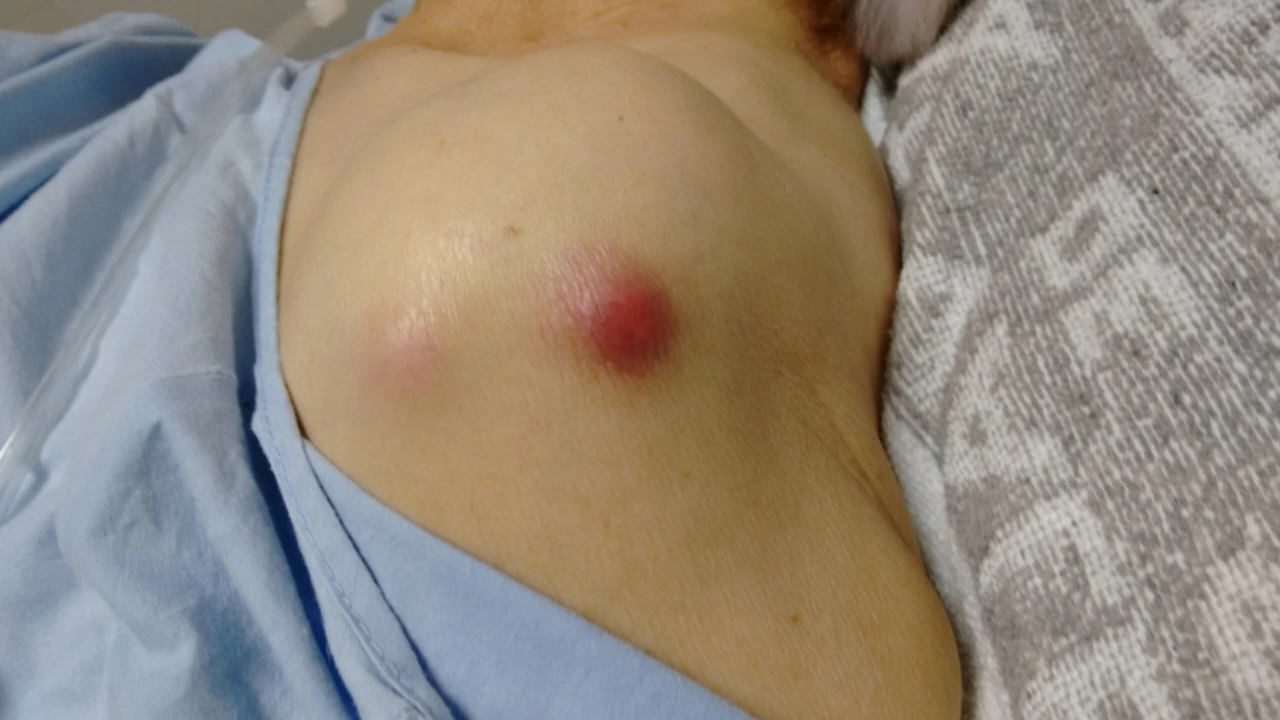An abscess is a pocket filled with pus that forms due to a bacterial infection. This pus-filled pocket can appear anywhere on the body, such as the skin, mouth, and internal organs, such as the lungs, brain, or spinal cord.
An abscess usually looks like a reddish lump that feels warm to the touch. The pus inside the abscess is made up of white blood cells, dead cells, and bacteria. Abscesses are usually not treated with antibiotics, but must also be opened and drained.
If not treated immediately, the abscess can enlarge. As a result, serious complications can occur, such as sepsis. Abscesses can occur in humans and animals, such as cats .
Causes and Symptoms of Abscesses
Abscesses are often caused by bacterial infections that usually occur as a complication of other infectious diseases. Abscesses are rarely caused by viral, parasitic, or fungal infections. However, people with these infections are at risk of developing secondary infections that then form abscesses.
Symptoms of an abscess depend on where it forms. If it appears on the skin and mouth, the sufferer can experience pain, swelling, warmth, and fever . While if an abscess forms inside the body, symptoms can arise such as shortness of breath, coughing, stomach pain , and fever.
Abscess Treatment and Prevention
Small skin abscesses are usually treated with warm compresses . Large abscesses need to be treated with antibiotics . Doctors can also perform minor surgery to drain the pus.
Abscesses can be prevented by living a clean and healthy lifestyle, maintaining healthy skin, and seeking treatment immediately if you experience an infection. If you already have an abscess, do not squeeze or burst it so that the bacteria in the abscess do not spread.
Causes of Abscess
Abscesses can form as a result of the immune system’s natural reaction to a bacterial, viral , fungal, or parasitic infection that enters through a break in the skin, such as a cut . When an infection occurs in a certain part of the body, white blood cells will gather in that area and fight the cause of the infection.
If left untreated, the process can lead to inflammation and form a cavity filled with pus. Pus itself is a fluid made up of white blood cells, dead cells, and bacteria.
The types of bacteria that most often cause pus to build up in various parts of the body come from the Staphylococcus aureus and Streptococcus pyogenes groups .
Risk Factors for Abscess
Abscesses can happen to anyone. However, there are factors that can increase a person’s risk of experiencing this condition, namely:
- Suffering from diabetes
- Having close contact with a person infected with Staphylococcus bacteria
- Have skin conditions, such as acne and eczema
- Having a weak immune system, for example due to suffering from Crohn’s disease , cancer, or HIV/AIDS
- Currently undergoing therapy with drugs that suppress the immune system ( immunosuppressants )
Types of Abscesses
Based on the location of formation, abscesses are divided into skin abscesses, mouth abscesses, and abscesses in internal organs. The following is an explanation of the types of abscesses:
1. Skin abscess
A skin abscess is a type of pus that develops under the skin. This type of abscess is the most common and easiest to treat. Some types of skin abscesses include:
a. Breast abscess
Breast abscess can occur due to bacterial infection in the breast tissue. The bacteria can enter the milk ducts through cracks in the nipple. Although it usually attacks breastfeeding mothers, breast abscesses can also be experienced by women who are not breastfeeding.
b. Anal abscess
An anal abscess is usually caused by a bacterial infection in the anal area. This infection can occur due to various factors, such as blocked glands in the anus, anal injury, or sexually transmitted diseases.
2. Oral abscess
Oral abscesses generally occur in the teeth or tonsils, as explained below:
a. Dental abscess
A dental abscess is a type of abscess that forms around the root of a tooth or in the gums. This condition is more likely to occur in people who do not maintain dental and gum hygiene, and often consume foods high in sugar.
b. Peritonsillar abscess
This type of abscess usually occurs as a complication of untreated tonsillitis . Peritonsillar abscesses are more common in children, adolescents, and young adults.
3. Abscess of internal organs
In addition to the skin and mouth, pus can also form in internal organs, such as the brain or spinal cord. These abscesses are usually more difficult to detect and treat. Types of abscesses in internal organs include:
a. Brain abscess
Although rare, pus can also form in the brain. The cause of a brain abscess is usually a bacterial or fungal infection that enters the brain tissue. Severe head injuries and pneumonia can also cause a brain abscess.
b. Spinal nerve abscess
This abscess is very rare, but can be life-threatening. Spinal nerve abscesses usually occur as a complication of an abscess in the membrane that protects the brain and spine (epidural).

